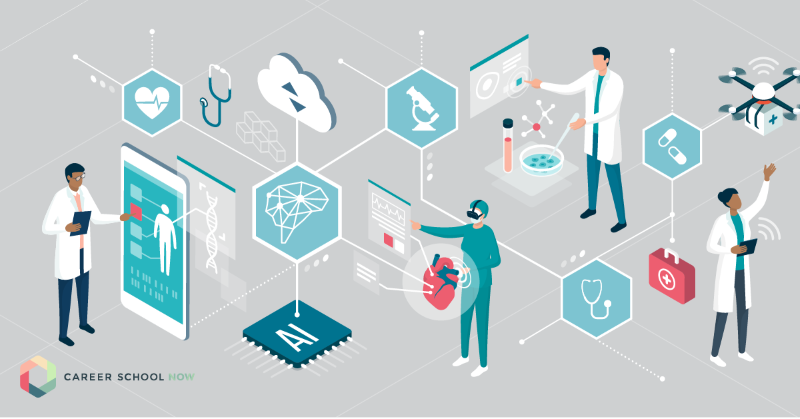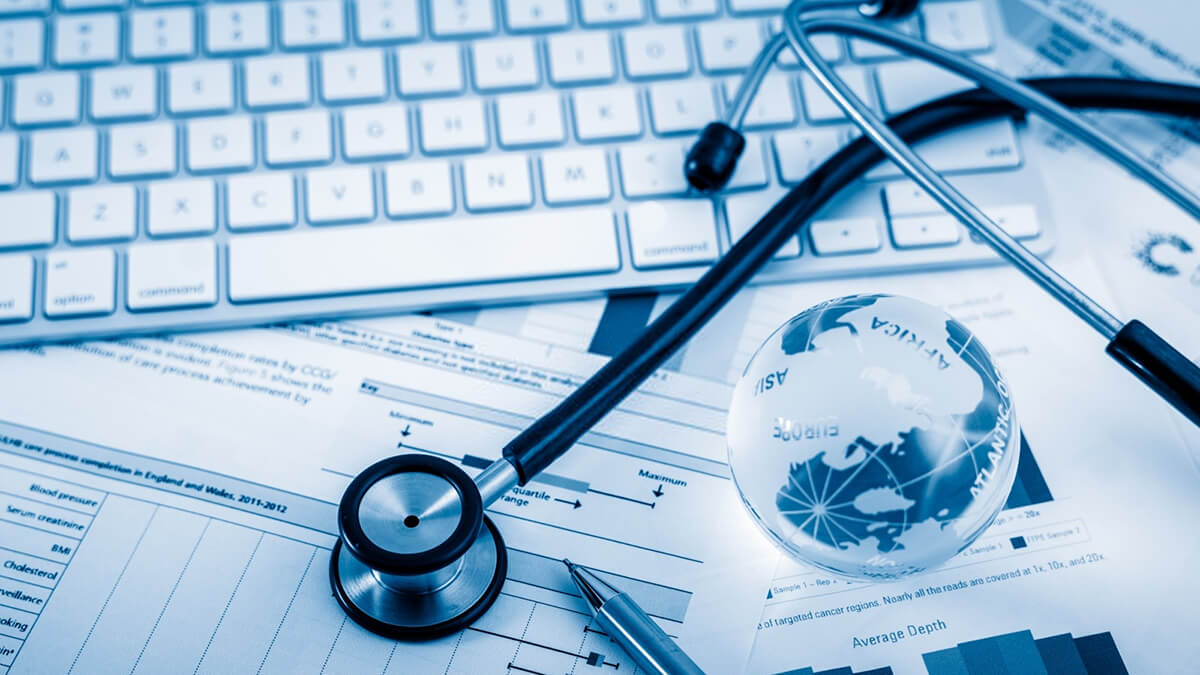Finest Practices in Medical Administration for Improving Performance and Decreasing Expenses
In the ever-evolving landscape of medical care, the search of best methods in medical management is critical for boosting efficiency and curbing expenses. By integrating advanced innovations such as digital health documents and telemedicine, healthcare carriers can simplify operations and improve person treatment. Modern technology alone is not a remedy; maximizing resource appropriation and promoting joint communication amongst treatment teams are just as essential. As companies strive to balance top quality and cost, what approaches should be prioritized to accomplish these twin goals? The solution to these inquiries hold the key to a much more lasting healthcare system.
Leveraging Advanced Modern Technology
In today's rapidly developing health care landscape, leveraging sophisticated modern technology is no more optional yet important for efficient medical administration. The combination of digital options right into health care systems has actually changed the method centers operate, enhancing procedures and improving individual treatment. Electronic Health And Wellness Records (EHRs) are essential, supplying thorough person information that can be accessed promptly by authorized employees, hence lowering redundancy and decreasing mistakes. By streamlining client information, EHRs get rid of the need for cumbersome documentation and promote smooth communication among medical care providers.
Telemedicine is one more technical improvement that has actually revolutionized client interaction. It supplies benefit for both patients and medical care professionals by making it possible for remote examinations, which can decrease the demand for in-person check outs and optimize visit scheduling. Furthermore, telehealth systems can prolong medical care access to country or underserved areas, connecting voids in care distribution.
Additionally, using Expert system (AI) and artificial intelligence is ending up being increasingly common in anticipating analytics, permitting very early discovery of potential health and wellness concerns and more educated decision-making. These technologies, when integrated properly, can improve diagnostic precision and individualize client therapy strategies, ultimately causing boosted healthcare results and functional effectiveness.
Optimizing Source Allotment
Effective resource appropriation is vital for making best use of the effectiveness of medical management. By purposefully handling resources such as workers, tools, and finances, healthcare facilities can considerably improve their operational efficiency, improve client results, and decrease unnecessary expenditures. The very first step in optimizing resource allocation involves conducting a comprehensive assessment of current assets and identifying locations where sources might be underutilized or overextended. This evaluation ought to be data-driven, utilizing metrics and analytics to inform decision-making procedures.
Focusing on resource allocation based upon individual needs and solution demands is important. This entails straightening resources with high-demand locations, such as emergency treatment or specialized treatments, to ensure prompt and effective person care. Applying versatile staffing models can likewise optimize labor sources by adjusting workers allotment in feedback to varying person volumes. In addition, accepting telemedicine and various other technical solutions can ease physical resource restrictions by providing alternate avenues for patient-provider interactions.
Economic sources should be thoroughly monitored and assigned with critical insight to support both temporary functional needs and long-term institutional goals. This includes investing in training programs that improve team expertises and adopting energy-efficient practices that decrease functional prices (medical administration). Inevitably, an optimized source allowance approach cultivates a lasting medical care environment that is responsive, efficient, and financially prudent
Streamlining Workflow Processes
When healthcare facilities aim to improve functional performance, streamlining operations procedures comes to be a crucial emphasis. Reliable operations lessen redundancy, get rid of unnecessary steps, and enhance coordination among medical care specialists. This technique not only accelerates service distribution yet additionally improves the high quality of client care.

Next, innovation assimilation plays a considerable duty in streamlining process. Implementing electronic health and wellness documents (EHRs) and computerized doctor order access (CPOE) systems decreases documentation, minimizes human error, and makes sure information is available to all pertinent employees. Additionally, leveraging telemedicine platforms can simplify patient assessments and follow-ups, minimizing the pressure on physical framework.

Inevitably, streamlined workflows bring about cost reductions and enhanced individual complete satisfaction, cultivating an extra lasting healthcare atmosphere.
Enhancing Information Monitoring
Building upon streamlined workflows, optimizing data management ends up being an important element in progressing healthcare management. Reliable data monitoring systems are critical for keeping precise client records, boosting decision-making, and making sure compliance with regulatory criteria. By carrying out robust information administration services, medical care centers can enhance the top quality of individual care while simultaneously lowering operational prices.
One secret aspect of boosting data monitoring official statement is the combination of advanced digital health document (EHR) systems. These systems help with the smooth exchange of client details across various departments, reducing replication of tests and decreasing errors. A properly designed EHR system supports information analytics, allowing doctor to recognize patterns and make educated choices relating to patient care.
Moreover, safeguarding client data is vital. Adopting extensive cybersecurity actions, consisting of file encryption and routine audits, ensures the integrity and discretion of delicate details. This not only safeguards people but likewise preserves the establishment's credibility.
Purchasing team training is an additional crucial aspect. Enlightening healthcare professionals on data administration techniques boosts their capacity to efficiently use innovation, causing boosted person outcomes. In conclusion, enhancing data administration through advanced technology and detailed training is crucial for achieving efficiency and expense reduction in medical management.
Fostering Collaborative Interaction
A crucial component in advancing medical administration is fostering collaborative interaction amongst health care experts. Efficient communication is critical for guaranteeing seamless patient treatment, maximizing therapy results, and reducing errors. By urging open discussion and sychronisation across multidisciplinary teams, healthcare companies can improve their operational efficiency and lower unneeded expenses.
Central to this approach is the assimilation of interaction innovations such as electronic wellness documents (EHRs) and protected messaging platforms, which promote the rapid exchange of important client information. These devices enable doctor to gain access to and share data in actual time, making sure that all team participants are informed and straightened in their decision-making processes. In addition, routine team conferences and interdisciplinary rounds can further advertise a culture of cooperation and accountability.
Educating programs concentrated on improving interaction skills are likewise essential. These programs can assist team establish the capacity to convey details clearly and listen proactively, thus minimizing misunderstandings and promoting an encouraging work websites atmosphere. In addition, adopting standard communication methods, such as SBAR (Situation, Background, Evaluation, Suggestion), can enhance the exchange of information, ensuring that vital information are conveyed succinctly and successfully. Inevitably, fostering collaborative communication brings about improved healthcare shipment and expense financial savings (medical administration).

Verdict
Incorporating advanced innovation, such as electronic health and wellness records and telemedicine, alongside optimized resource allotment and streamlined workflow processes, is vital for boosting performance in clinical important site management. Efficient information administration and fostering joint communication amongst healthcare groups are essential for lessening redundancies and improving treatment top quality. By focusing on precautionary care and taking part in top quality renovation efforts, healthcare organizations can attain considerable cost financial savings and boosted client outcomes, therefore making certain lasting healthcare distribution in a significantly complicated environment.
Comments on “Medical Administration Programs: What to Try to find in a High quality Program”